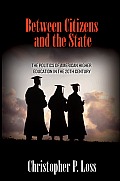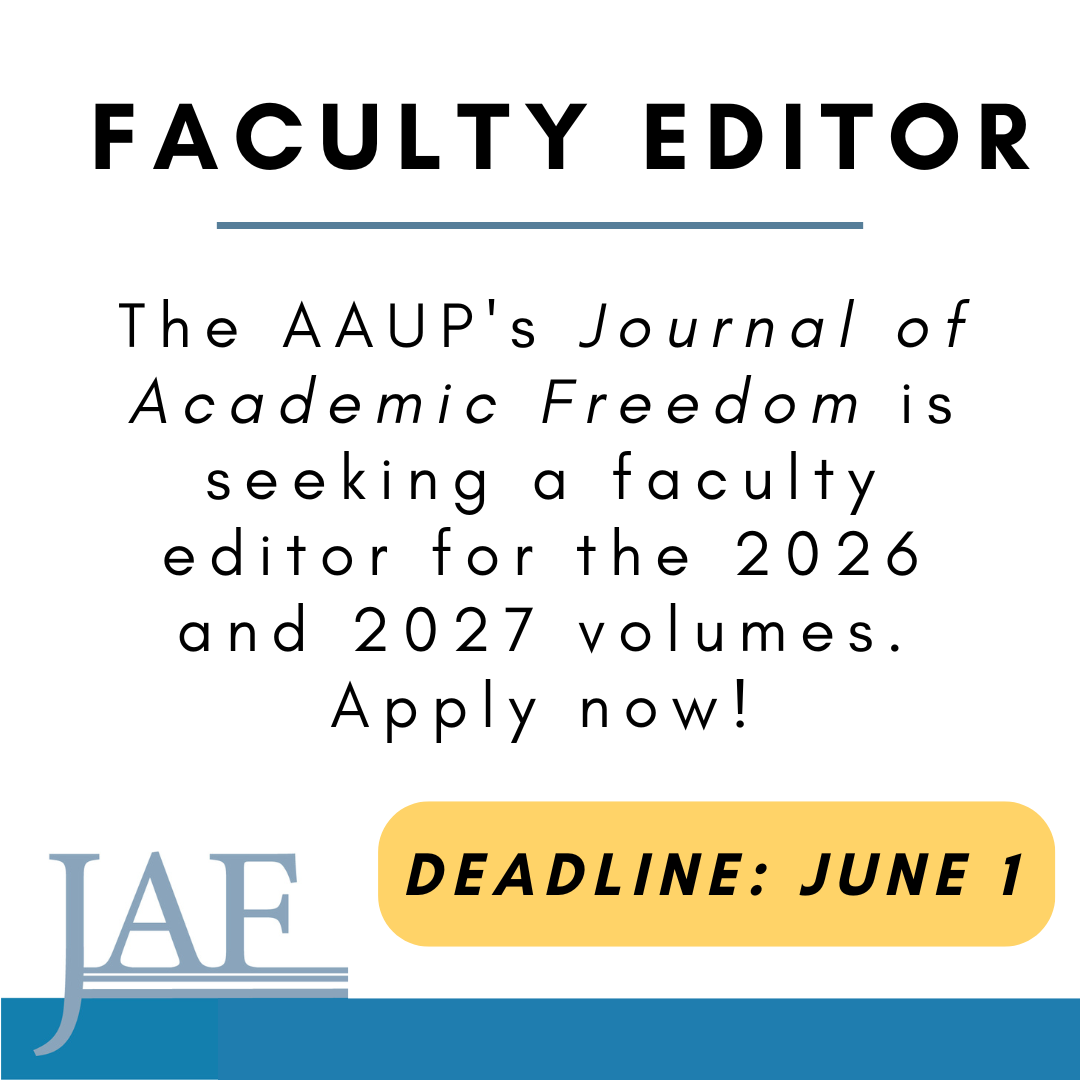- About
- Programs
- Issues
- Academic Freedom
- Political Attacks on Higher Education
- Resources on Collective Bargaining
- Shared Governance
- Campus Protests
- Faculty Compensation
- Racial Justice
- Diversity in Higher Ed
- Financial Crisis
- Privatization and OPMs
- Contingent Faculty Positions
- Tenure
- Workplace Issues
- Gender and Sexuality in Higher Ed
- Targeted Harassment
- Intellectual Property & Copyright
- Civility
- The Family and Medical Leave Act
- Pregnancy in the Academy
- Publications
- Data
- News
- Membership
- Chapters
From Heroism to Diversity
Between Citizens and the State: The Politics of American Higher Education in the Twentieth Century. By Christopher P. Loss. Princeton, NJ: Princeton University Press, 2012.
What is the state’s interest in an educated citizenry? Given Americans’ historical aversion to strong central government, how has our government intervened in higher education in order to achieve that interest? How has state interest in higher education changed over time? Christopher Loss tackles these questions in his insightful survey of state interactions with higher education in the twentieth century. Drawing on political science scholarship, he argues that public and private institutions of higher learning have emerged as a key “parastate,” or institutional mediator between citizens and the state. As a result of complex, historically contingent, and often indirect financial and political relationships, our colleges and universities have conveyed state interests to citizens “by proxy” while retaining enough independence to enable students to formulate new demands upon the state.
Loss begins his narrative with the emergence of personnel specialists during World War I. These psychologists’ methods of “adjusting” individuals to their institutions were adopted in the 1920s by college administrators concerned with high student drop-out rates. The result was the inauguration of collegepreparation ceremonies, events, and courses as well as a range of student counseling services. Loss breaks new ground in his discussion of how New Deal administrators used universities— particularly public ones—to connect Americans to relevant governmental relief and economic development programs. In the 1940s, social psychologists determined that educated soldiers made better soldiers, leading the US military to offer secondary and college-level classes to millions of servicemen and preparing the way for the Servicemen’s Readjustment Act of 1944, which brought large numbers of white male veterans to the nation’s college campuses. In the 1950s, troubling evidence of student apathy and ignorance about foreign affairs led to the creation of governmental and privately funded study-abroad programs and area studies departments as well as the inauguration of educational television. In tandem with the National Defense Education Act of 1958, which funded scientific, technological, language, and area studies, these educational innovations were intended to help the United States succeed domestically and internationally in its struggle against communism.
In the 1960s, students challenged the legitimacy of higher education’s long-standing mission of adjusting them to mainstream society. In place of the “despised adjustment regime,” Loss argues, students pushed for new courses on race, gender, and minority identity that “made the cultivation of personal identity the aim of a college education.” College administrators were happy to comply, since such courses co-opted and diffused student rebellion, and since corporate and governmental interests also saw value in educating for diversity. Loss chronicles the growth of governmental tuition support programs in the 1960s, which aimed to make higher education accessible to more minority and working-class students. He also describes the subsequent withdrawal of significant governmental funding for education, which has forced students to take on debt to pay educational costs that have doubled (adjusted for inflation) since the early 1970s.
Loss deserves credit for moving beyond the usual benchmarks— the GI Bill of 1944, the National Defense Education Act of 1958, and the Higher Education Act of 1965—to illuminate a longer history of subtle governmental interventions in American higher education. His well-written study also demonstrates that time and again, students took whatever educational support governmental intervention allowed yet ignored the particular lessons of citizenship the government intended to impart. In the section on higher education from the 1960s onward, Loss ably details the uneven effects of Great Society measures meant to improve educational access. He demonstrates that 1960s-era flexible admission programs aimed at increasing the enrollment of minority students simply extended to a broader population personnel services that had been developed in the 1920s to keep white male students in college.
Loss falters, however, in his final section on “Diversity” or the “Rights Revolution.” His survey of 1960s campus radicalism is superficial. In contrast to works such as Martha Biondi’s The Black Revolution on Campus or Ibram H. Rogers’s The Black Campus Movement, Loss depicts black students’ struggles for intellectual inclusion as easily won. He admits that the erasure of black history distorted our understanding of US history as a whole, yet he casts university courses on black history not as intellectually necessary but as serving “personal needs” or a “black identity crisis.” He treats women’s and ethnic studies courses with similar condescension, writing that “identity groups decried their exclusion from the curriculum and administrators granted reparations by making room for them in it.” He draws on the work of Christopher Lasch and other critics of “therapeutic culture” to argue that student agitation for scholarship on female and minority topics destroyed the “heroic age of reciprocity between citizens and the state” (when the state offered educational benefits in exchange for military or other forms of governmental service). Instead, he argues, women and minorities created a new concept of citizenship “wrapped in a bundle of group and personal rights, with few if any reciprocal obligations.” It’s an odd argument, especially considering Loss’s evidence that American students never “reciprocated” educational offerings in the ways that governmental officials hoped they would.
In his concluding chapters, Loss resorts to overly general statements such as “The 1960s made a jumbled mess of statesociety relations.” He laments the “dissolution of the New Left into a mishmash of distinct identity groups,” blames the putative valorizing of personal identity by minority and women’s groups for the “fractionalizing” of US politics, and then insists that the “root cause [of fractionalization] was the rapid expansion of government” since World War II, an explanation that entirely sidesteps the role of business interests. Apparently unaware of scholarship detailing Anglo-Saxon supremacy in nineteenth- through mid-twentieth-century America, Loss mourns an unnamed earlier period when “identity” had been uncorrupted by distinctions of race or gender. He concludes: “Where identity had previously been gleaned by what you did for a living, it now begged a more probing analysis in which how you felt, what you believed, . . . the way you looked, . . . and whether you had been addicted, victimized, . . . or abused mattered as much if not more.” It’s an unfortunately silly conclusion to a largely useful study of governmental interventions into higher education.
Beryl Satter is professor of history at Rutgers University’s Newark campus and the author, most recently, of Family Properties: How the Struggle over Race and Real Estate Transformed Chicago and Urban America. Her e-mail address is [email protected].





